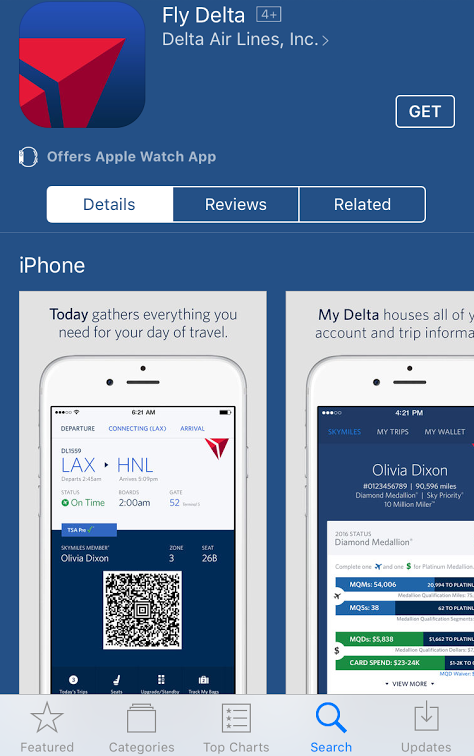The advertisement for breast cancer awareness was seen on TV on Friday and will be fully broadcast on Monday.
Daily Archives: 13/10/2017
My Computer Says I’m Going To Die
What should we do if computers predict who may develop a terminal disease, attempt suicide or contract diabetes? And what should you or your doctor do on receiving such a forecast? Is it even possible? Yes – the growing accuracy of computer algorithms suggests we will soon be facing such challenges.
Researchers at Florida State University, for example, recently mined data from electronic health records in which they identified a group of patients who had attempted to commit suicide. They then used the fast-growing data analysis technique, machine learning, to identify a combination of factors that could most accurately predict a suicide attempt.
This kind of predictive modelling is not new, but the capabilities of computers to recognise complex interactions among variables associated with outcomes of interest has greatly advanced in recent years. Computers can now not only analyse huge volumes of data, they are also capable of reading and understanding free text (such as a doctor’s dictated note) and can combine multiple sources of information to achieve accurate predictions. Using machine learning, these systems are also designed to continuously improve as they gain experience with the outcomes they are measuring. As a result, they produce timely insights that exceed the capacity of humans.
The Florida State University researchers found the machine learning algorithms could predict a suicide attempt with 80 to 90 percent accuracy up to two years in advance. Other organisations are developing similar approaches for a variety of other conditions such as depression, heart failure, heart attacks, dementia, Parkinson’s disease, and chronic kidney disease.
The health industry is awash with data that can feed and inform these computer models, making it likely that their accuracy will continue to improve. Are we rapidly approaching a time when computers are so confident in their predictions we should consider that we already have the disease, or what we could call a “proto-disease”?
The promise of accurate disease predictions is they potentially allow for interventions that could reduce or eliminate the likelihood the diseases will occur. Unfortunately, the ability to predict is advancing faster than our ability to prevent. Consider a visit to your doctor during which she advises you a computer programme has predicted you will develop diabetes mellitus within the next two years. She prescribes a large dose of advice on healthy living (which you may be more likely to follow given the computer’s warning) but otherwise has little to offer. Indeed, studies that have evaluated prevention of diabetes with available medications have been inconclusive. You no doubt leave the office sullen, now bearing the burden of having a proto-disease.
To further complicate matters, it may not be your doctor who breaks the news to you. Data mining can also be conducted by organisations that have access to information about you, such as your health insurer. Ideally, health insurers will use the information to help keep you healthy but as noted earlier, effective interventions are not yet fully developed.
There may also be more nefarious uses for the information. A health insurer could, for example, use information about health risks in their insured population to their commercial advantage, and their customers’ detriment. Knowledge is power – especially in the insurance business.
Any insurer that can accurately predict who of their insured will develop illnesses (and hence cost more) will have an undisputed advantage when it comes to payment terms.
Ethical, moral and legal questions also arise. Does your health insurer – or more importantly your doctor – have to inform you when an accurate computer algorithm predicts you will develop a disease? Should it be considered negligent if they do not?
The near term challenge is to confirm the accuracy of the predictions and to find ways to inject them into the work-flow of already over-burdened health professionals. The predictions will ideally be accompanied by evidence-based information to help guide the clinician on what actions to take. Healthcare organisations already committed to population health (in which care is organized around groups of patients such as those with diabetes) will need to find ways to make use of the information. Finally, this data revolution will perhaps lead to a renaissance in disease prevention, with a focus on proto-diseases.
Advancement toward machine learning and disease predictions is already well under way. It’s just a matter of time before their predictions become a factor in determining how best to treat patients. The key challenge will be whether effective interventions can keep pace with the predictions.

AR – Could Legal Issues Snap Developers Back To Reality?
Last summer’s phenomenon, Pokémon Go, which was downloaded onto more than 5% of Android phones in the US within just two days of its release and exceeded both Snapchat and Twitter in terms of daily active users, provided a first mainstream look at the potential of augmented reality in the gaming industry. Some estimations put the AR market at a value of $120 billion by 2020 (Digi-Capital), and the myriad legal challenges posed by the sector led us to investigate the issues in a recently-published industry whitepaper.
Facial recognition, geo-location and real-time data harvesting via AR games results in novel legal challenges. This technology will be used by many stakeholders, including game owners, advertisers and analytics service providers. The potential liabilities are significant, making it important to pin down as far as possible the responsibilities and roles of the parties. Various legal difficulties may also arise in relation to copyright and advertising. Yet notwithstanding these hurdles, analysts believe that the technology will be transformational for consumers in the next ten years.
Privacy
AR is spreading rapidly, but usage must still fit within the new legal frameworks for data protection – especially if data relating to identifiable individuals is being collected or otherwise used.
Personal data means data which relate to a living individual who can be identified using this data, or other information which is in the possession of, or is likely to come into the possession of, the data controller. Personal data can include:
- Geo location;
- Appearance; and
A fundamental requirement of European data protection law is that individuals are made aware of how their data will be used, shared and handled – and which entity is responsible for each. This is often achieved with privacy policies. As well as transparency and data security, users are entitled to a copy of their data, and are able to have it deleted in some scenarios; processes need to be in place to facilitate this. Building up large datasets from a huge user base may be tempting, but it brings significant responsibilities.
A lot of the data collected by AR will be personal data. For example, Pokémon Go asks for access to the user’s camera, contacts, GPS location, and SD card contents. Given AR’s capacity for “always on” data recording, there is the potential for reams of data to be collected, much of which could be linked back to the user, even if unintentionally. Developers must be wary of key principle of data protection: personal data collection should be adequate and relevant for its specific purpose, but never excessive.
Security
As with many rapidly evolving technology ecosystems, AR is vulnerable to breaches in security. The risk of bogus, malware-ridden copies of AR apps is huge; developers and players need to be careful to guard against hacking and protect data. It’s for the best that encryption is increasingly becoming standard, particularly for data in transit.
Developers should aim for ‘privacy by design’, embracing privacy and data protection compliance from the conceptual design stage of projects, instead of attempting to address privacy and security features as an afterthought.
Sanctions
AR companies failing to comply with the rules risk significant consequences. Breaches of data protection law can trigger fines of up to £500,000.
On top of negative press, fines and other sanctions, individuals are entitled to sue for compensation if they have suffered damage as a result of unlawful use of their personal data. Pokémon Go developer, Niantic, has been in the spotlight and privacy regulators are starting to ask searching questions around data collection and storage.
Copyright
AR can also raise complex copyright issues. For example, who owns user-created content which is integrated with digital information from an app? How does the freedom of panorama defence, which allows photography of buildings and sometimes sculptures and other art works which are permanently located in a public place, interact with AR? Footage of recognisable sights could be augmented for commercial purposes, potentially placing a virtual banner on a national monument?
Developers will need the appropriate rights clearances for their games, to guard against copyright infringement suits. When negotiating with rights holders, developers should aim for the rights being granted to be as broad as possible. Ideally, there should be no limitation on devices that can be used, and there should be a right to distribute on “internet-connected devices”.
Advertising
AR will create exciting new advertising opportunities: envision targeted and real life product placement through which brands can be embedded directly into the user’s experience. This could drive high levels of engagement. However, all advertising and product placement will also have to comply with advertising regulations. These demand, for one, that advertisers not mislead consumers, and ensure that marketing communications are obviously labelled.
As all these issues demonstrate, the advent of AR will bring with it challenges to match the opportunities generated. Gung-ho developers may wade into the field without the appropriate diligence, but prudence will likely be rewarded by longevity, and legal and regulatory security.
Reed Smith‘s Entertainment and Media team continue to be at the forefront of advising on legal issues relating to virtual and augmented reality on a global basis.
Gregor Pryor
Partner
Co-Chair of Reed Smith’s Entertainment and Media Industry Group
gpryor@reedsmith.com
+44 (0)20 3116 3536

Why We Should All Switch To A Green Energy Supplier Before The Electric Car Revolution
When I was growing up in the 90s the concept of consumption and the definition of “energy efficient” was very different to what it is today. Back then it was all about making small changes: fixing leaky facets, throwing food waste on the compost heap, carpooling to school. Halogen light bulbs were considered the saviours of planet Earth and my father was always quick to remind me to turn off the lights when I left a room. For a time, it seemed as though this was enough to combat the dangers of climate change.
However, what it means to be environmentally aware in the modern world is vastly different. We are now being told that these little changes are not enough, and that we should all band together and make significant alterations to our lifestyles — many of which come at a steep cost — to ensure the longevity of our planet and species. Not that I’m complaining!
Fortunately, we (at least the majority of us) haven’t ignored the facts and stats. Despite Mr. Trump’s outlandish claims that global warming is a Chinese conspiracy designed to upset America’s economy, most of us will agree and accept that changes MUST be made. And switching to a renewable provider is the best place to start.
Electric cars seem to be the newest and best way that we, the general consumers, can do our bit. Thanks to Tesla, EVs are starting to make a major dent on the fossil fuel market; or more specifically, the filling station and gas industry. But, while they’re advertised as zero emissions vehicles — and there’s no doubt whatsoever that electric cars themselves are more environmentally friendly than petrol and diesel cars — they are only as clean as their power supply.
According to Scientific American, cars and trucks account for 24% of greenhouse emissions in the United States; and at present (2017) electric cars account for only 0.01 percent of all vehicles on the road. However, if current trends continue this could rise to 33 percent by 2040. Just imagine the extra pressure this would place onto power plants. It’s great that so many countries want to ban petrol and diesel fuelled cars, but we’re going to need a major boost in both the supply and demand for renewable energy before that happens. And the only way we’re going to get this is if we all make the switch in our homes.
But things are looking up!
Renewable energy has reached a tipping point. According to the World Economic Forum (WEF), solar panels now hold the top spot for being the cheapest energy supply, beating both coal and natural gas. This means that green energy is no longer only for the wealthy or environmentally conscious, it even makes sense for those who don’t give a damn about global warming. The scientists have done their fair share, now it’s time for us — as in society — to start making changes. Money is no longer an excuse!
Despite the current reduction deficit, it’s not too little too late
The UK has met and exceeded targets, reducing emissions 42% below 1990 levels in 2016, and is also on track to out-perform the second and third targets (though not yet the forth). That’s an accomplishment to be proud of, and one that I’m sure we all hope will continue to be a priority, even with Brexit hogging all the Government’s attention.
However, scientists state that the world needs to be completely emission-free well before 2040. Under the current Climate Change Act target, the UK are only set to reduce emissions by 80% by 2050. While you may think that it’s all just too little, too late, it’s important to remember that Government policy is dictated by the majority. If we change, the rules will change. And I for one don’t want to live in a world where we can’t look back and say “We gave it our best shot.”
For more random ramblings visit AdamManuel.com.

Health24.com | The 3 safest ways to stretch tight hamstrings
Stretch Smart
Have you ever heard someone say, “I can’t do yoga, because I could never touch my toes?” Or, maybe you’ve heard it come out of your own mouth?
It’s important to know you don’t have to touch your toes to do yoga. But if you want to, it’s a great practice for getting you there. In order to touch your toes, you need to stretch your hamstring muscles.
As you do the poses that follow, keep in mind two things: First, don’t lock your knees. When your knees lock, that contracts your hamstrings, which pulls your pelvis forward and takes your lower back out of its ideal, natural curve.
Second, think of straightening your legs by contracting your quadriceps. Weak or underutilised quads can make it difficult to straighten your legs, so learning to use your quads will help you get the hamstring stretch you’re aiming for.
Supta Padangusthasana (Reclining Hand-to-Big-Toe Pose)

You’ll need a yoga strap for this pose, though a tie, belt or T-shirt will all work if you don’t have one. Lying on your back on your mat, bend your right knee into your chest and place the strap around the arch of your foot. Extend the foot up toward the ceiling. To straighten the leg, contract the quadriceps.
Remember: Don’t lock your knee! You’ll know you’ve gone too far if your lower back flattens into the floor.
Feel it: Stay for 5 to 10 breaths, bend your knee to release, and do the other side.
Uttanasana (Standing Forward Bend) with a Chair
Stand with your feet hip-distance apart and your hands on your hips. Take a big inhale and, as you exhale, keep your knees slightly bent and fold forward toward your chair. Rest your head on your forearms. With your lower back straight, straighten your legs by contracting and drawing the quadriceps upward.
Refine it: Keep your knees ever so slightly bent. Lift your sitting bones up while you press down through your heels to increase the stretch in the back of your legs.
Feel it: Stay for 5 to 10 breaths. To come up, bend your knees and roll up one vertebra at a time.
Wide-Legged Forward Bend
Stand with your legs at least one leg’s distance apart. Place your hands on your hips, inhale and lift your chest. Exhale and fold forward, hinging from your hips. Bring your fingertips to the floor and inhale. Exhale and release your torso into the pose.
Refine it: If your fingertips don’t reach the floor, place yoga blocks or a stack of books under your hands.
Feel it: Stay for 10 breaths and come up slowly so you don’t get lightheaded: Place your hands on your hips and inhale halfway up. Exhale there. Then tuck your chin and inhale all the way to standing.
This article was originally published on www.bicycling.co.za
Image credits: iStock
NEXT ON HEALTH24X

DNA study provides insight into how to live longer
A year in school adds nearly a year to your life, study in Edinburgh shows.
Twitter Boycott Questioned As Women Refuse To Stay Silent Over Sex Harassment And Abuse Claims
A call for women to boycott Twitter, after actress Rose McGowan was suspended over tweets after accusing Harvey Weinstein of rape, has been met with scepticism, as some say they won’t be silent now “the whole world is listening”.
Dozens of women have come forward making accusations of sexual assault and harassment against film producer Weinstein, triggering a conversation about the scale of both that women face.
Oscar-winning actor Emma Thompson labelled Weinstein a “predator” who is just the tip of an “iceberg”, adding his alleged behaviour was “endemic” in Hollywood.
#WomenBoycottTwitter trended on Friday as people pledged to quit the site in solidarity with McGowan.

Bloomberg via Getty Images
Harvey Weinstein is facing mounting accusations of sexual harassment and assault, triggering a conversation about how much of both women face
After her Twitter account was restored, McGowan encouraged the boycott. Journalist Lauren Duca and model Chrissy Teigen are among those taking part, while a host of celebrities have also pledged their support.
But journalist Jane Merrick asked why women should quit the site given “we’ve only just started talking about the things we’ve kept a secret for years”.
As the hashtag trended, Labour MP Jess Phillips said: “I’m not going to boycott Twitter I’m going to sing like a bird.”
She shared a passage from her memoir Everywoman, in which she writes: “Our silence is complicity, our volume is napalm.”
Writer Kate Leth said she understood the idea of a boycott but added: “I don’t personally agree that silence is the right protest to being silenced”.
Author Samantha Shannon said she would not boycott but would be recommending books by women instead.
One Tweeter said they had “no idea why women would want to silence their voices when the whole world is now listening”.
One woman said a boycott would “accomplish nothing”. Another asked: “Isn’t being silent about issues a hell of a lot worse than speaking up about them?”
Another refused to boycott Twitter saying: “This is a time for us to SHOUT FROM THE ROOFTOPS.”
McGowan’s suspension was due to the fact she tweeted a personal phone number in a series of tweets to Amazon founder Jeff Bezos, in which she alleged the head of Amazon Studios knew about her allegations about Weinstein and ignored them.
In later tweets, Rose also alleged that she sold a script to Amazon and tried to wrangle it back after hearing a “Weinstein bailout” might be taking place.
HuffPost UK has contacted Amazon for comment.

Health24.com | Warning signs you’re overtraining
Are you pushing too hard? Tom Craggs, lead coach at Running with Us, explains the warning signs of overtraining syndrome (OTS).
1. When running
Lack of progression:
Despite increasing the quality and/or quantity of your training, your progression slows or reverses. You’re working harder in sessions that previously felt easy.
Injuries and niggles:
Constant niggles in different areas or a persistent injury that just doesn’t improve.
Muscle fatigue and slow recovery:
A classic sign of OTS is taking significantly longer to recover from hard sessions.
2. In the mind
Mood swings and sensitivity:
Finding yourself regularly irritable and moody.
Loss of motivation:
Simply no longer enjoying your training, seeing running as a “chore” and fearing your hard sessions
Less concentration, resilience and focus:
Finding it harder to “tough it out” in hard sessions or races.
3. Outside running
Weight loss or gain:
Overtraining increases the likelihood of rapid and hard-to-explain weight fluctuations.
Cravings:
Constantly craving sugar, caffeine or salt to perk you up.
Loss of appetite:
An increase in adrenaline and noradrenaline triggered by overtraining can cause a loss of appetite.
Tiredness:
Constant or periods of extreme tiredness. A decreased ability to achieve a deep sleep phase, often indicated by an increase in movement during sleep is another sign.
Illness:
Upper respiratory infections are a very common OTS indicator.
Loss of libido:
Overtraining causes a reduction in anabolic hormones, which can result in reduced sex drive.
Blood deficiencies:
Blood tests can reveal OTS markers such as a drop in ferritin (a protein that stores iron) and magnesium.
Heart rate:
A rise in your resting heart rate on waking, or a consistent change while running at lactate threshold can indicate OTS.
This article was originally published on www.runnersworld.co.za
Image credit: iStock
NEXT ON HEALTH24X

Magic Mushrooms Could ‘Reset’ The Brain Of People With Depression
Scientists have discovered that psilocybin – the psychoactive substance found in magic mushrooms – could effectively ‘reset’ the brain activity of people with severe depression.
The small study by researchers at Imperial College found that when given to patients in whom conventional treatments had failed, the substance was able to have a positive long-lasting effect.

Daniel Berehulak via Getty Images
In fact, some five weeks after having administered the compound the researchers found they still had significantly reduced symptoms.
The researchers believe that psilocybin is able to effectively reset the activity of key brain circuits that are known to play a key role in depression.
In speaking to the patients after their treatment, Dr Robin Carhart-Harris, Head of Psychedelic Research at Imperial, who led the study, said:
“Several of our patients described feeling ‘reset’ after the treatment and often used computer analogies. For example, one said he felt like his brain had been ‘defragged’ like a computer hard drive, and another said he felt ‘rebooted’.
“Psilocybin may be giving these individuals the temporary ‘kick start’ they need to break out of their depressive states and these imaging results do tentatively support a ‘reset’ analogy. Similar brain effects to these have been seen with electroconvulsive therapy.”
While researchers have been testing the effectiveness of psychedelic drugs to combat depression and addiction before, this is the first time that psilocybin has been used in this way.
In the study, 20 patients who had treatment-resistant depression were given two doses of the drug with an initial large dose administered and then a smaller one a week later.
Using functional MRI scanning the researchers found that the effects were profound. Not only was there reduced blood flow in the amygdala – a region of the brain that processes emotional responses – but also increased stability in another region of the brain that had previously been linked to depression.
While the results from the study are promising, Dr Carhart-Harris remains cautious pointing out that this is very early on in the testing phase and that the study was very small.
Professor David Nutt, Edmond J. Safra, senior author of the paper adds: “Larger studies are needed to see if this positive effect can be reproduced in more patients. But these initial findings are exciting and provide another treatment avenue to explore.”

Delta Airlines Just Ditched The Worst Thing About Flying
There’s nothing to put a real dampener on your holiday spirit like remembering you have to go via an airport first: The antisocial hours, the security queues, and the lack of legroom on board all serve to make flying an unenjoyable experience.
But now Delta airlines have taken a step to making it less painful and removed one of the most cumbersome parts of air travel – check in.

SophieGallagher
Manual check in, that either required you to visit the airline’s website or speak to an actual human at the airport, was undoubtedly an overhang from the days of paper tickets.
So the American airline decided to ditch it all together, for customers who are using the latest version of the Fly Delta mobile iPhone app (it doesn’t seem to apply to Android just yet).

SophieGallagher
Now, you will be automatically checked in, and your boarding pass sent to your phone 24 hours before you are due for take off.
So you don’t need to worry about doing anything apart from opening the app.
The change was first noted by a customer who had downloaded the iOS version of the app, but the updates seem to have taken place on the 12 October.
It is not yet clear how Delta plans to manage other administrative tasks that were sorted during the check-in process, such as seat allocation or bag check.
And of course you will still have to get to the airport well in advance for security checks (and an obligatory Duty Free supermarket sweep).
But as Delta are the first US airline to permanently make this change (Jetblue did briefly pilot something similar but scrapped it), it seems hopeful that others will follow suit.
The only airline elsewhere in the world offering a similar service is German airline Lufthansa.
Last month Delta announced that they would be offering free mobile messaging on flights as part of a “larger strategy around entertainment and giving our customers something they’ve been asking for,” according to The New York Times.
Delta said it would be the first global carrier based in the United States to offer onboard texting without charging for online access.






